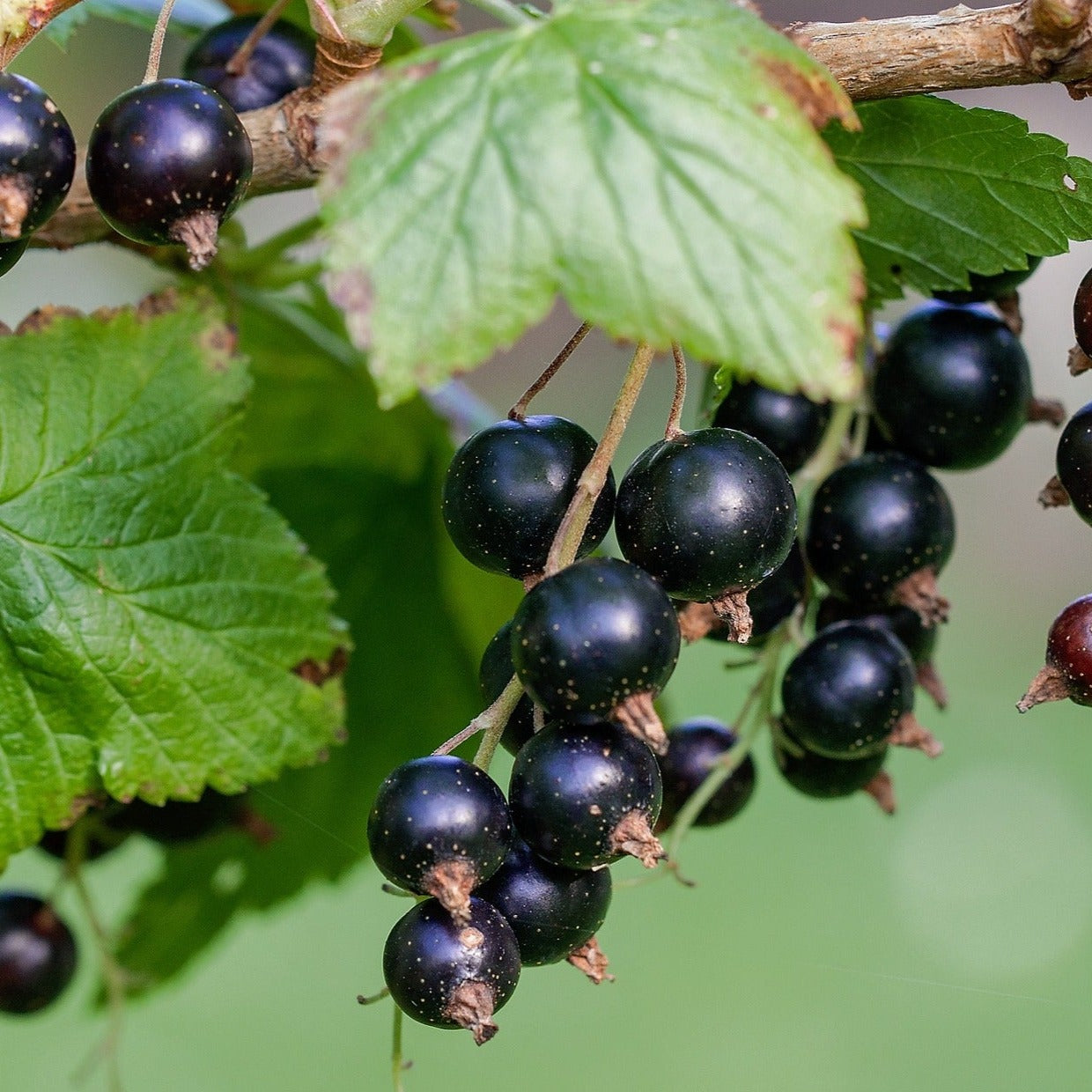The American Fig Company
Crandall Black Currant
Crandall Black Currant
Couldn't load pickup availability
The Crandall Black Currant plant is a deciduous shrub that typically grows to a height of 4-6 feet and a width of 3-5 feet. It is native to North America and is commonly found in wetlands and along stream banks.
The plant has deep green, lobed leaves that turn a bright yellow in the fall. In the spring, it produces clusters of small, bell-shaped flowers that are pinkish-red in color. These flowers are followed by small, dark purple berries that are sweet and juicy, with a slightly tart flavor.
One of the unique characteristics of the Crandall Black Currant is its distinctive fragrance. The leaves and flowers emit a strong, spicy scent that is reminiscent of cloves or cinnamon. This fragrance is attractive to both humans and pollinators, making the plant a popular choice for gardens and landscaping.
Crandall Black Currant is a relatively low-maintenance plant that is easy to grow in most soil types. It prefers moist, well-draining soil and full to partial sun exposure. The plant is also relatively disease-resistant and can tolerate cold temperatures, making it a good choice for colder climates.
Overall, the Crandall Black Currant plant is a beautiful and fragrant addition to any garden or landscape. Its ornamental features and edible fruit make it a popular choice among gardeners and nature enthusiasts alike.
Latin Name: Ribes hudsonianum
Site and Soil: Crandall Black Currants prefer full sun to partial shade and well-drained, moist soil.
Pollination Requirements: Self-fertile but will produce more fruit with cross-pollination.
Hardiness: Hardy to USDA Zone 3 (-40°F/-40°C) without winter protection.
Bearing Age: 2-3 years after planting
Size at Maturity: Can grow up to 4-6 ft in height and width if not pruned.
Bloom Time: Spring
Ripening Time: Late July to early August
Yield: Can produce 5-10 lbs. of fruit per plant
Pests & Diseases: Susceptible to currant aphids and white pine blister rust. Planting resistant varieties and removing nearby currant and gooseberry plants can help prevent rust.
USDA Zone: 3-7
Share

Featured Review
"Great! Great! Great! Great! Great!"
✰✰✰✰✰
- JARREN -
